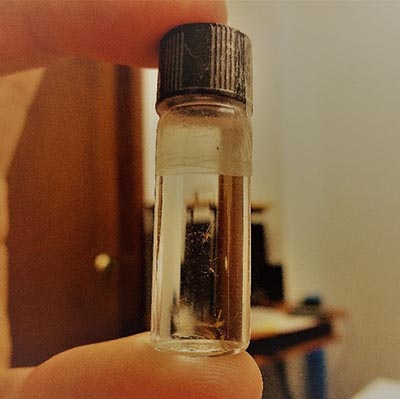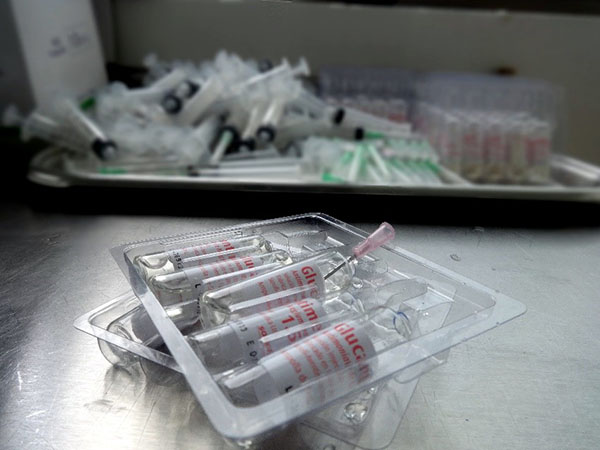Stories of war and violence have permeated the daily life of Colombians for more than half a century. However, in the last decade, the voices and narratives about the armed conflict have diversified and expanded significantly. This is mainly due to the institutionalization of remembrance processes, civil society initiatives, and the opportunities opened up by the peace negotiations between the Colombian government and the Revolutionary Armed Forces of Colombia (FARC). Although these actions still fall short of the effort needed for a fuller reconciliation, they have introduced, little by little, profound changes in the ways in which society and the state remember the war, understand the armed conflict, recognize their victims, and seek to transform the past and present of violence.
Paradoxically, many Colombians share a feeling that we are in a sort of deluge, that we have reached a point of saturation about the what and the how of the narratives seeking to draw attention to the severe consequences of war. Something about our current efforts is not entirely working. Something is limiting these stories from moving forward in the task expected of them—at the level of society and the individual—in terms of memory, reconciliation, and peacebuilding.
Although without planning beforehand, my ethnographic fieldwork has approached the war from an atypical point of entry. I have spoken with soldiers, guerrilla ex-combatants, scientists, public health officials, victims of kidnapping, nursing assistants, peasants, and doctors about a vector-borne disease closely associated with the war: leishmaniasis. In this research, I have noticed different—or at least unconventional—ways of narrating the conflict and the violence. I have been surprised to hear stories that depart from standard discourses, previously rehearsed, repeated, and sometimes, riddled with platitudes. I have been stunned to witness how conversations about leishmaniasis have made it possible for people to see themselves as victims of unsuspected forms of violence generated by the war. And I continue to be amazed when my interlocutors and I recognize, through leishmaniasis, that war is experienced daily in ways different from those in which it is usually presented to us.
Understanding war from alternative perspectives enriches our understanding of the past. When we delve into the dynamics of conflict from non-habitual vantage points, it becomes more difficult to fall prey to the narrative tropes that account for the Colombian armed conflict through the “traditional” places, mechanisms and actors of the war. By adopting this oblique perspective, it becomes easier to account for the ubiquitous, inescapable and penetrating nature of war, expressed in realities that still remain largely unexplored. Here, I want to draw attention to the power of unconventional stories to speak to realities otherwise eclipsed. And I want to reflect on the ways these atypical stories can help Colombians move beyond the violence of war.
But leishmaniasis is not deadly, is it?
Painless skin sores, which grow slowly and resist healing, are the only physical manifestation of leishmaniasis. These lesions appear when the mantablanca—a whitish and tiny sand fly that is sometimes infected with microscopic Leishmania parasites—encounters a human source of blood in the selva [poorly translated as jungle] that allows it to develop its eggs. Leishmaniasis ulcers sometimes heal on their own, but often require some treatment—popular or pharmaceutical—in order to heal. What biomedicine offers is a highly toxic drug, developed in the 1940s, which involves 20 consecutive days of painful injections and very unpleasant side effects. This pharmaceutical treatment, called Glucantime, has been subject to strict controls by the Colombian state. Its restricted access is usually understood as a political strategy of war to harm one of the populations most affected by the disease: the guerrillas.

Preserved leishmaniasis-transmitting sand flies. Photo by the author.
The Colombian state’s restrictive control of a drug in order to affect guerrilla groups erroneously signals that leishmaniasis is deadly. Under this logic, many in rural Colombia think that leishmaniasis kills even though this disease is considered by medical professionals and scientists a non-fatal health condition of relatively minor severity. In a war context where being labeled as a guerrilla member is almost a death sentence, perhaps the worst stigma someone can carry, it is reasonable—logical, almost obvious—to think that if the state takes the trouble to restrict Glucantime, it is because leishmaniasis kills its enemy.

Preparation of Glucantime doses to treat Colombian Army soldiers affected by leishmaniasis. Photo by the author.
Luis Eladio Pérez is a public figure of Colombian politics who was serving as a member of Congress when the FARC kidnaped him. He was held captive between 2001 and 2008 in tropical forests of southern Colombia. During his captivity, besides suffering two episodes of leishmaniasis, Luis Eladio inexplicably survived two diabetic comas and a heart attack. However, the only drug he received from the FARC, in seven years of kidnapping, was Glucantime.
The FARC never gave me any medicine, neither when I had the heart attack nor for diabetes. The only medicine they gave me was for leishmaniasis . . . They considered leishmaniasis a deadly disease . . . I mean, they were much more worried about my leishmaniasis than about my heart attack . . . They pay a lot more attention to leishmaniasis, and they transmit to you that fear that I am transmitting to you, maybe. Now you make me realize that I was wrong all this time. I considered leishmaniasis deadly. I thought that [Leishmania parasites] were going my liver, to the lungs, I do not know where, do you understand me? . . . The peace you are giving me with that . . . Because I was totally wrong and it was because of them [FARC guerrilla], because they transmit you terror for leishmaniasis. As I said, that is the only drug they really strive to get, no matter how. They used to bring it from Brazil, from Venezuela, I don’t know, from wherever they could.
In our conversation about leishmaniasis, Luis Eladio expressed a great relief to learn, almost ten years after recovering his freedom, that he was not going to die from this disease. Out of fear, every year since his liberation, Luis Eladio did everything possible for someone to confirm that he did not have Leishmania parasites circulating in his body. His enormous relief, however, contrasted with a feeling of perplexity: that sensation of profound bewilderment when the reality with which one has given meaning to one’s experiences and fears falls apart. What difference did our conversation make to his story about kidnapping and leishmaniasis? And what difference does it make to the rest of us to know this reality from another point of view?
Pluralizing horizons of knowledge about war
My feeling is that many of the narratives about leishmaniasis and the war that I have collected during my field research can help us tweak or tighten—barely a quarter turn of a screw—the interpretative references we have constructed so far to make sense of the armed conflict (Castaño et al., 2018). This happens, perhaps, because those who tell stories about a health problem like leishmaniasis do not perceive that they are discussing violence. On the contrary, they tend to situate these stories apart from the political tensions and the typical narratives of the armed conflict. In doing so, these stories of scientists, sand flies, repellents, medicines, and health policies weave other reconstructions of the past that enrich or complement what we have come to know about the war. In an unconventional way, they pluralize our knowledge horizons (Jackson, 2002) and invite us to explore how the conflict and its logics have come to invade every sociocultural corner of Colombian society, including spaces and actors in seemingly aseptic areas such as biomedicine and public health.
From my conversations with kidnapping survivors like Luis Eladio Pérez, former FARC guerrillas and peasants, I have come to understand that the rumor of leishmaniasis mortality constitutes a social reality that cannot be redressed simply by providing “accurate,” “scientific,” or “correct” information about the disease. We are dealing here not with truthfulness but with credibility. It is a matter of what becomes credible in a context of war and the reverberations of violence this produces. After all, “rumors can be credible if they can explain conjunctions between day-to-day experiences and larger historical processes in which people who disseminate rumors are involved” (Kaler, 2009: 1714). That leishmaniasis is deadly is not only a credible claim but also an idea that, far from appearing nonsensical, makes a lot of sense within the cultural and social patterns that have become habitual in five decades of a dirty war. The irregular armed conflict is what has triggered, exacerbated, and enabled the persistence of this rumor, offering favorable conditions for it to spread and be maintained as a bold explanation of the damage caused by leishmaniasis and the restriction applied to the Glucantime. In the end, war has changed the parameters of what we consider possible or credible, and these alterations have reproduced violence.
Colombian society has been profoundly transformed and fragmented by the armed conflict, so much so that even today it is very challenging for us to explain and agree on what has happened. It is hard for us to understand how we have all participated, to assume the degree of individual and collective responsibility that this demands, and to decide what is needed to overcome this incessant and unfinished tragedy. In a powerful way, the study of the social life of a disease such as leishmaniasis gives us clues to expand the spaces, relationships, and actors with whom we must work to build memory, responsibility, reconciliation, and peace.
References
Castaño D, Jurado P and Ruiz G (2018) La Memoria como Relato Abierto: Retos Políticos del Trabajo de los Centros de Memoria y las Comisiones de Verdad. Análisis Político 31(93): 3–19. DOI: 10.15446/anpol.v31n93.75614.
Jackson M (2002) The Politics of Storytelling: Violence, Transgression and Intersubjectivity. Copenhagen: Museum Tusculanum.
Kaler A (2009) Health interventions and the persistence of rumour: the circulation of sterility stories in African public health campaigns. Social Science & Medicine 68(9): 1711–1719. DOI: 10.1016/j.socscimed.2009.01.038.

2 Trackbacks